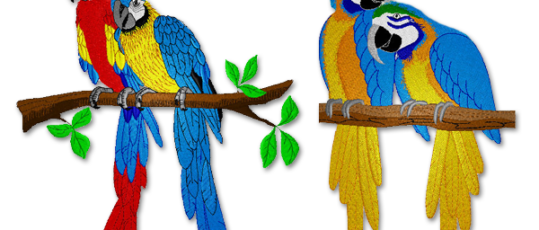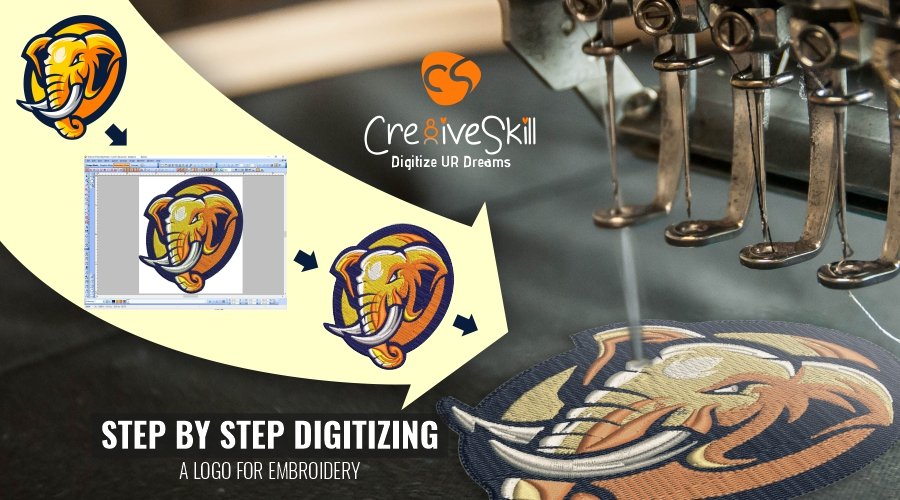Effective Digitizing for Embroidery: Quick Turn-around
Effective Digitizing for Embroidery: Quick Turn-around
Blog Article
Understanding the Embroidery Digitizing Process: Your Ultimate Overview
Embroidery digitizing is a careful craft that calls for accuracy and know-how to convert detailed styles right into digital layouts for equipment needlework. As artisans embark on this trip to master the needlework digitizing procedure, a thorough understanding of the essentials sets the foundation for quality. However, beyond the rudimentary expertise exists a world of advanced software application, specialized devices, and nuanced methods waiting to be discovered. By delving into the nuances of digitizing, one can unlock a world of creative possibilities and raise their needlework tasks to new heights.

Comprehending Needlework Digitizing Basics
Needlework digitizing fundamentals form the foundation upon which elaborate styles are converted right into machine-readable layouts for precise sewing. This first step in the embroidery digitizing procedure is essential for guaranteeing that the final embroidered item is a faithful representation of the original style. Comprehending embroidery digitizing basics involves realizing crucial ideas such as stitch kinds, sew instructions, density, rug, and draw compensation.
Sew types play a crucial duty in identifying the visual and textural end result of the stitched style. By selecting the proper stitch kind, whether it be satin, fill, or running stitch, digitizers can achieve the desired impact and improve the total high quality of the embroidery. Furthermore, sew direction influences the circulation and measurement of the design, while thickness identifies the spacing and coverage of the stitches.
Moreover, rug stitching supplies stability to the layout by safeguarding the material and avoiding distortion during the embroidery process. Draw compensation is an additional necessary factor to consider to neutralize the natural tendency of textile to agreement when sewn. Grasping these needlework digitizing basics is fundamental for creating professional-quality embroidered products.
Picking the Right Digitizing Software Application
Selecting the ideal digitizing software is a critical choice that considerably affects the efficiency and quality of the needlework digitizing process. Digitizing for Embroidery. When choosing the appropriate digitizing software program, it is important to think about factors such as the intricacy of styles you prepare to create, the user-friendliness of the software application, the level of customer assistance used, and the compatibility with your needlework maker
There are numerous digitizing software application choices readily available in the market, ranging from basic programs for novices to sophisticated software program for specialist digitizers. Some popular choices include Wilcom EmbroideryStudio, Hatch Needlework Software Application, and PulseID. These software packages supply a variety of devices and attributes to aid you develop detailed layouts with convenience.
Before making a decision, it is suggested to discover the various software application choices via cost-free tests or demonstrations to figure out which one ideal suits your demands. In addition, reviewing testimonials and looking for referrals from skilled digitizers can give beneficial insights into the toughness and weak points of each software application bundle (Digitizing for Embroidery). By meticulously examining your needs and comparing the attributes of different digitizing software application, you can make an enlightened option that enhances your needlework digitizing process
Digitizing Tools and Strategies

Optimizing Style Settings for Needlework
Understanding the complexities of design settings is essential in attaining ideal cause the embroidery digitizing process, building upon the foundation laid by recognizing digitizing tools and strategies. When optimizing design settings for needlework, it is important to think about factors such as stitch kind, thickness, rug, draw compensation, and registration. Stitch type selection affects the general feel and look of the style, with options like satin, fill, and running stitches offering different textures and effects. Density describes the spacing and thickness of stitches, impacting the style's coverage and longevity. Appropriate underlay stitching offers security and stops material distortion, especially for intricate styles or on stretchy materials. Pull the original source compensation adjusts for textile stretch during stitching, ensuring exact style duplication. Enrollment setups line up different elements of the design precisely, maintaining overall design honesty. By fine-tuning these layout setups, embroiderers can improve the quality and precision of their embroidered creations.

Troubleshooting Common Digitizing Issues
When running into typical digitizing issues during the needlework process, it is important to comprehend the root triggers and implement efficient options without delay. One common problem is stitch density concerns, where stitches might be too dense, triggering the material to tighten, or also sparse, causing voids in the layout. Adjusting the stitch thickness settings in the digitizing software can assist solve this problem.
An additional regular obstacle is string breaks throughout the needlework process. This can occur because of various factors such as incorrect stress setups, boring needles, or using low-quality string. Guaranteeing appropriate maintenance of the needlework equipment, including routine needle adjustments and tension changes, can lessen the incident of thread breaks.
In addition, style registration mistakes can cause misaligned aspects within the embroidery style. Checking the layout positioning in the digitizing software program and making needed changes prior to stitching can aid in preventing this problem. By addressing these usual digitizing problems quickly and effectively, you can guarantee a smoother needlework process and premium completed products.
Verdict
In final thought, mastering the company website needlework digitizing process calls for a solid understanding of the fundamentals, the ideal option of software application, and knowledge of tools and methods. Maximizing style setups and repairing usual digitizing problems are important action in making certain premium embroidery results. By complying with these actions faithfully, one can accomplish accuracy and performance in the digitizing process.
Report this page